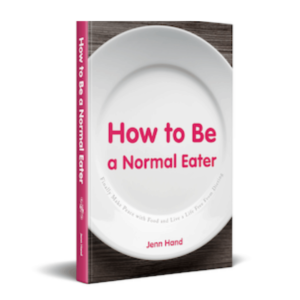Feeling unsure about what to eat can be frustrating, especially when you’re hungry but nothing sounds good. So, today, I’m going to share how to figure out what to eat so you actually feel satisfied.
Written by Jenn Hand, Holistic Nutritionist, Board Certified Health Coach, NBC-HWC
If you’ve ever found yourself standing in front of the fridge or scrolling through takeout options with no idea what will satisfy you, you’re not alone.
After years of battling this myself — “Should I eat something ‘healthy’ or should I eat what I want?!” — I’m going to share my tips on how to figure out what to eat so you’ feel satisfied and don’t end up bingeing later.
Whether you’re in a food rut or just looking for inspiration, it’s time to take the guesswork out of mealtime! Here are some practical ideas to help you make nourishing choices and listen to your body’s needs. And if you’re looking for more support around emotional or binge eating, make sure you learn more about food relationship coaching.
Table of Contents
- A Step-by-Step Process to Help You Figure Out What to Eat
- Nourishing Foods for Mealtime Inspiration
- Why Am I Hungry But Nothing Sounds Good?
- Should You Eat When Nothing Sounds Good?
- How to Identify Emotional Hunger vs. Physical Hunger
- Mindful Eating Practices for You to Try
- Comfort Foods That Can Help You Feel Nourished
- Hydration and Its Role in Appetite
- Why High Standards for Meals Can Be a Challenge
- Practice Gentle Nutrition to Support Your Body
- Common Questions
A Step-by-Step Process to Help You Figure Out What to Eat
Step 1: Check in with your body
Start by pausing to assess how your body feels.
Are you physically hungry, or is this emotional hunger? Pay attention to signs like a growling stomach, low energy, or a hollow feeling in your belly.
If you’re unsure, take a moment to ask yourself, “What’s my body asking for—energy, comfort, or distraction?”
Step 2: Check in with your mood
Your mood and energy can influence what feels satisfying.
If you’re stressed, you might lean toward something comforting, like a warm soup or pasta dish.
If you’re tired, simple, energizing foods like fruit, nuts, or a smoothie might feel better. Matching your meal to your current state can help ensure it hits the spot.
Step 3: What sounds good/satisfying/nourishing?
Think about what textures, flavors, and temperatures sound good.
Do you want something crunchy or creamy? Sweet, savory, or spicy? Warm or cold? You don’t have to get it perfect; just narrowing down options based on what feels appealing can help you make a decision.
Step 4: Aim for balance
Once you have an idea of what you’re in the mood for, aim to create a balanced meal by including protein, fat, and carbohydrates.
For example, if you want a sandwich, add avocado for healthy fats or pair it with a side of fruit for balance. A well-rounded plate helps keep you satisfied and energized.
I usually recommend having half of what you think you “should” eat and half of what you want to eat. This gives you a good starting point for learning and refining!
Step 5: Get feedback and adjust as needed
If you’re still unsure, start with something simple like leftover or something that you already have on hand.
Eating a little can help awaken your appetite and clarify what you might want next. Remember, it’s okay to experiment—if one option doesn’t hit the spot, adjust and try again!
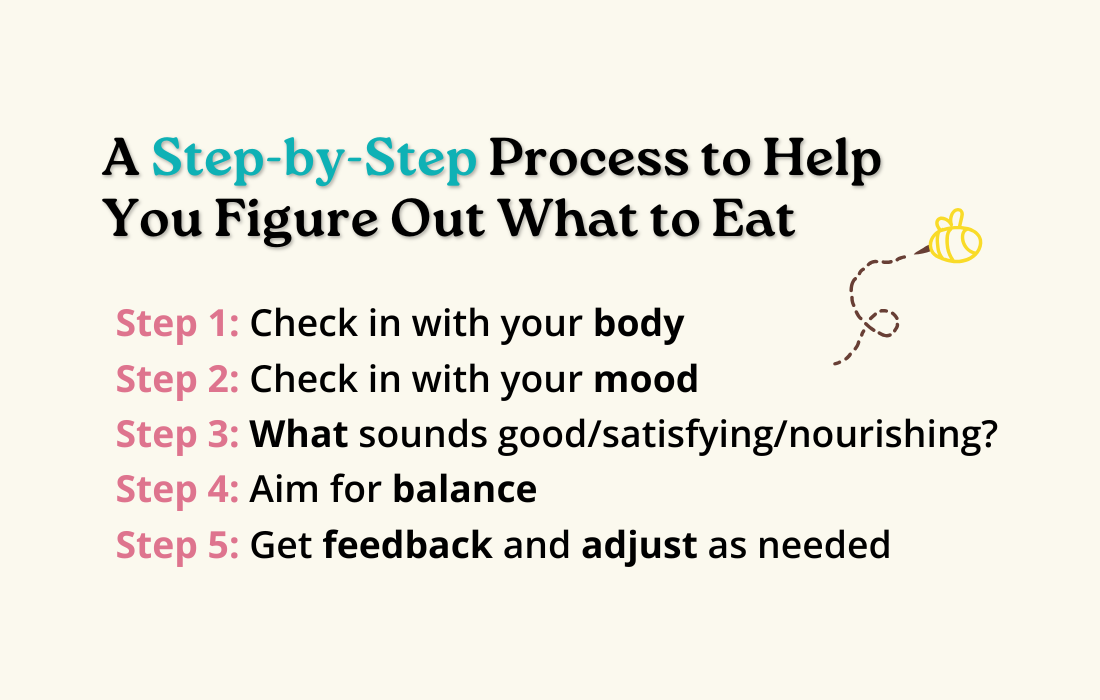
Nourishing Foods for Mealtime Inspiration
Sometimes you just need a list of ideas to get you started thinking about what you really want to eat.
Below are some nourishing satisfying meal and snack ideas.
Healthy Fats:
- avocado slices with olive oil and sea salt (make avocado toast on an Eziekial muffin–my absolute favorite!)
- mixed nuts and seeds (almonds, walnuts, chia seeds)
- greek yogurt with a drizzle of flaxseed oil or olive oil
- sliced olives with feta cheese and cherry tomatoes
- nut butter spread on whole grain toast
- coconut milk smoothie with berries and spinach
- salmon with a lemon-dill yogurt sauce
- guacamole with sliced veggies
- chia seed pudding with almond milk
Yummy Proteins:
- marinated chicken breast
- grilled chicken
- beef or chicken sliders
- chickpea salad
- beef tacos
- red lentil and coconut milk soup
- turkey meatballs with tomato sauce
- baked tofu with soy-ginger glaze
- salmon patties with dill yogurt sauce
- quinoa and black bean salad with lime dressing
Tasty Snacks:
- fresh veggies with hummus (eat with an Eziekial bread or muffin to add some protein)
- roasted nuts with apples and cheese
- cottage cheese with berries and a dash of honey
- carrots wrapped in ham or turkey and dipped in hummus
- sweet potato fries dipped in chive/greek yogurt dip
- greek yogurt with granola and a sprinkle of chia seeds
- hard-boiled eggs with a sprinkle of sea salt and pepper
- edamame with a touch of sea salt
- sliced cucumber with smoked salmon and cream cheese
- rice cakes topped with peanut butter and banana slices
Easy Meal Options:
- veggie stir fry with chicken or beef, topped with nuts
- grilled cheese sandwich with pickles, kimchi, or coleslaw
- chicken sausages with mashed potatoes and frozen vegetables
- quinoa bowl with sautéed spinach, mushrooms, and a poached egg
- sheet pan roasted vegetables with salmon
- shrimp tacos with avocado and salsa
- egg and veggie scramble with whole grain toast
- pita bread stuffed with falafel, tzatziki, and veggies
- baked sweet potato topped with black beans, cheese, and salsa
- turkey chili with a side of cornbread
Nourishing Sweet Treats
- dark chocolate dipped in almond butter
- chia seed pudding with coconut milk and fresh berries
- apple slices with almond butter and a sprinkle of cinnamon
- greek yogurt with a handful of mixed nuts and a dash of vanilla extract and maple syrup
- avocado chocolate mousse with a hint of cocoa powder and vanilla
🌷 Read my post on healthy desserts HERE >
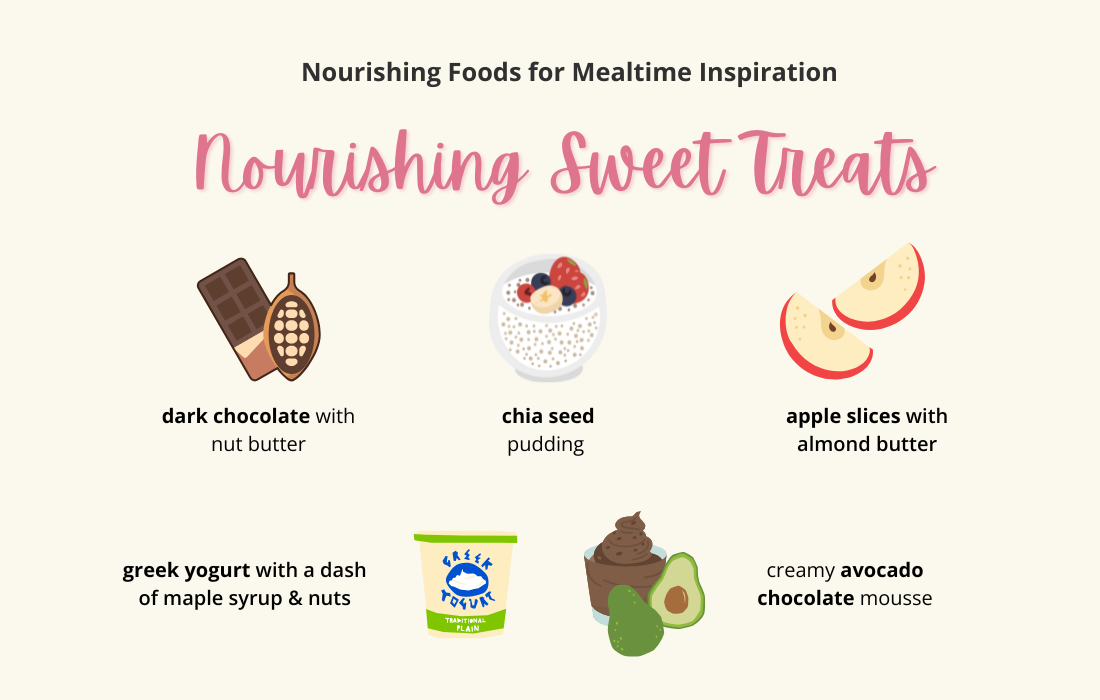
Why Am I Hungry But Nothing Sounds Good?
This feeling can arise when your body is hungry, but mental, emotional, or physical factors cloud your ability to decide.
Stress can suppress appetite, leaving you unsure about what to eat, while fatigue can diminish your interest in food altogether. Emotional disconnect, such as sadness or anxiety, might also create a barrier to figuring out what sounds satisfying.
I also used to get stuck in what to eat when I was going around and around in circles in mind about what I “should” eat vs what I wanted to eat.
To navigate this, it helps to ask yourself:
“What does my body need right now? Energy? Comfort? Something light?”
Exploring your emotions and physical state can guide you toward making a choice. I always recommend starting with half and half: half of what you “should” eat and half of what you want.
This way, you can satisfy both sides in your mind and also get feedback about what worked and what was satisfying. This helps you learn over time!
Should You Eat When Nothing Sounds Good?
If it’s been 4 hours or more since the last time you’ve eaten, it’s usually a good idea to eat something nourishing, even if nothing sounds appealing, to keep your body fueled and your energy steady.
Start with something small and neutral—like toast with almond butter or a smoothie—and reassess how you feel afterward. I like to say that analysis paralysis is solved by eating SOMETHING and then getting feedback as to whether it was satisfying, what you wanted, etc.
Eating a light, balanced snack can prevent overeating later and stabilize your blood sugar levels.
However, it’s also important to honor your body’s signals; if you’re genuinely not hungry, it might be beneficial to engage in a calming activity and revisit eating when your appetite returns.
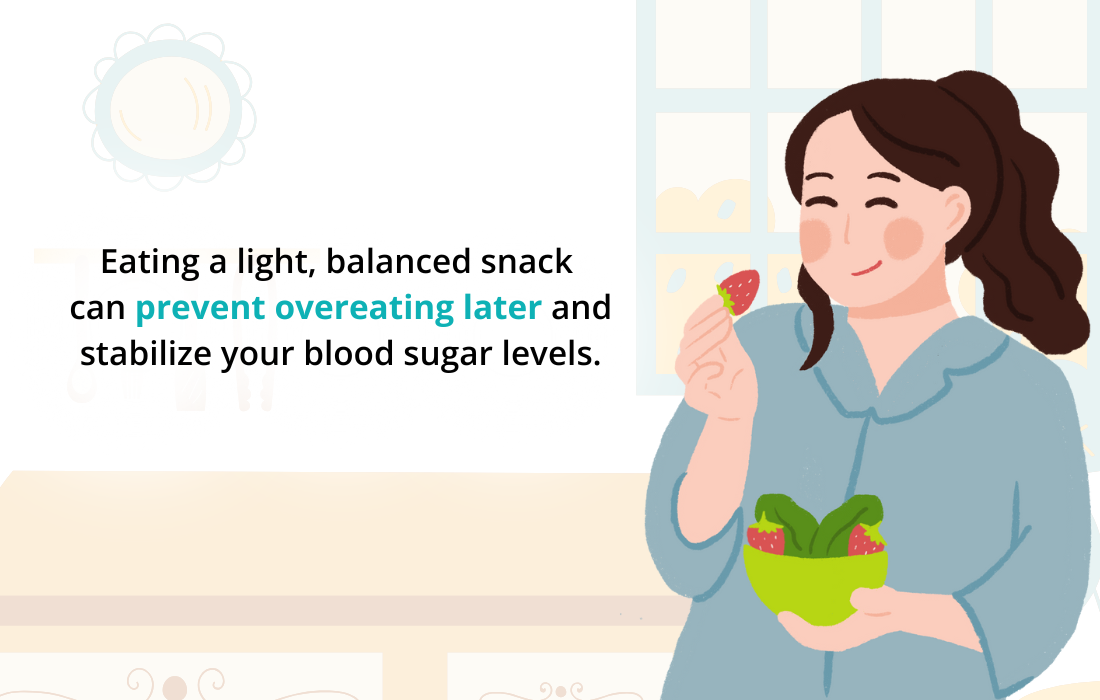
How to Identify Emotional Hunger vs. Physical Hunger
Physical hunger often comes with bodily cues like a growling stomach, low energy, or lightheadedness, while emotional hunger feels sudden and specific (like craving chips after a hard day).
Emotional hunger can be triggered by feelings such as loneliness, boredom, or frustration, leading to a desire for comfort foods that provide immediate satisfaction. A good rule of thumb is that the average person needs fuel every 3-4 hours (physical hunger.)
If it’s been about that timeframe, check in to see if there are physical hunger cues in your body.
You can also pause and reflect on your current emotional state—are you feeling overwhelmed, stressed, irritated, or triggered by something? Explore whether you want something to eat to reward yourself, numb out, distract yourself or make a hard feeling “go away.”
Mindful Eating Practices for You to Try
Mindful eating helps you reconnect with your body’s cues and makes meals more satisfying.
Start by eliminating distractions—turn off your TV, put away your phone, and sit down at the table. Begin your meal with a few deep breaths to center yourself. I used to keep a journal at the table to write down the swirl of thoughts that sometimes arose when I slowed down.
There is a misnomer that mindful eating is always calming—sometimes when you slow down, anxiety or emotions arise. That’s okay!
Slowing down allows you to see what’s going on inside of you and over time, enables you to deal with feelings rather than eating over them.
See if you can focus on the sensory experience of eating: notice the textures, flavors, and aromas of each bite. Take it slow, chewing thoroughly, and checking in with yourself periodically to ask, “Am I still hungry, or am I feeling satisfied?” These small shifts can transform your eating experience.
Comfort Foods That Can Help You Feel Nourished
When we think of comfort food, we often think of “bad foods.”
But comfort foods don’t have to be “empty calories” or overly indulgent; they can be both satisfying and nourishing. A bowl of veggie-packed chicken soup, creamy mac and cheese with a side salad, or a hearty lentil stew can check both boxes.
My mom’s homemade stromboli is one of my favorite comfort foods! These types of meals can provide emotional warmth while delivering nutrients to fuel your body. We’re taught in the diet world that food is only physical–it should be looked at as fuel. In reality, food is physical, mental, emotional and sometimes spiritual.
That’s why overcoming emotional and overeating can be so complex! See what foods give you comfort that also are satisfying.
If you’re craving something sweet, consider options like baked apples with cinnamon or dark chocolate with almonds—foods that satisfy your cravings without leaving you feeling sluggish or guilty.
There are health benefits to eating comfort foods that satisfying something within us mentally and emotionally–all a part of a balanced way of approaching food!
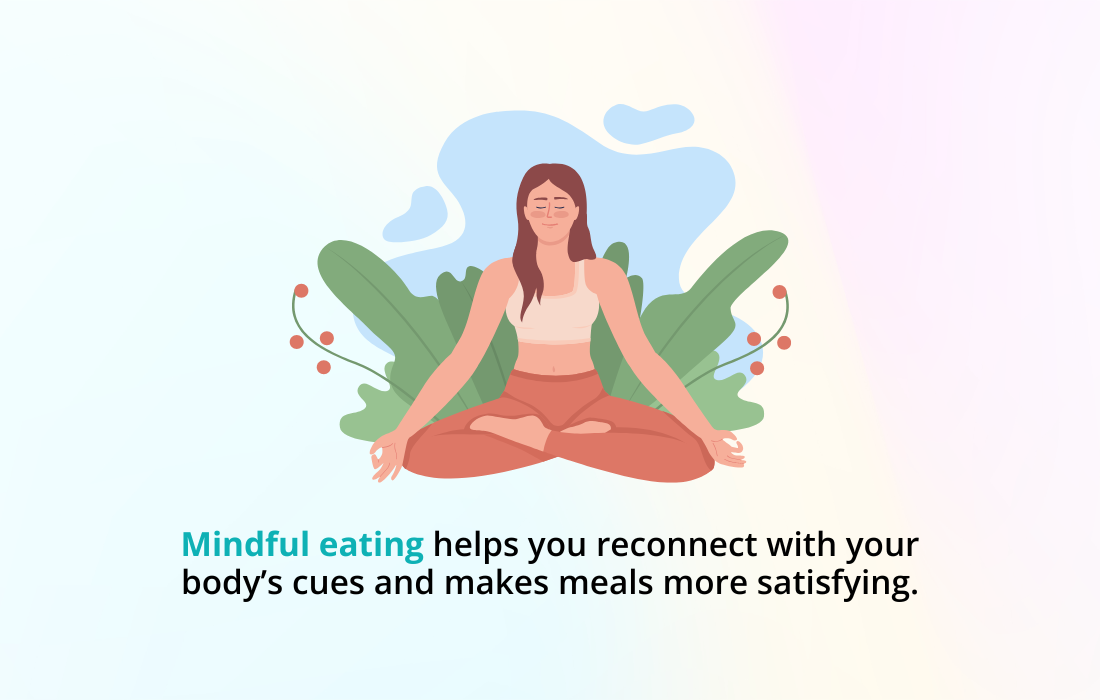
Hydration and Its Role in Appetite
Sometimes, what feels like hunger is actually thirst.
Dehydration can cause fatigue, brain fog, and a false sense of hunger, leading you to eat when your body really needs fluids. Make it a habit to hydrate throughout the day by keeping a water bottle with you or setting reminders.
If plain water feels boring, try infused water with fruits or herbs, herbal teas, or sparkling water.
When you feel hungry but unsure, drink a glass of water and wait 10–15 minutes. If the hunger persists, it’s likely your body’s signal for food.
Why High Standards for Meals Can Be a Challenge
If you’re holding out for the “perfect” meal, you may feel stuck and avoid eating altogether.
Aim for balance, not perfection! Lowering the bar and allowing yourself to choose something simple yet satisfying—like a sandwich or leftovers—can reduce decision fatigue and keep you nourished.
High standards can create unnecessary pressure, leading to anxiety around eating and food battles that spiral on and on in our minds.
Embracing flexibility and allowing yourself to enjoy imperfect meals can foster a healthier relationship with food, making it easier to listen to your body’s needs without judgment.
Practice Gentle Nutrition to Support Your Body
Gentle nutrition is about incorporating nutrient-dense foods in a way that feels natural and supportive, without forcing rigid rules or perfection.
Instead of focusing on “shoulds,” aim to include foods that fuel your body while honoring your taste preferences and cravings. For example, adding a handful of greens to your pasta or swapping in roasted vegetables as a side dish can boost nutrients without feeling restrictive.
This approach encourages balance over extremes—enjoying a variety of food groups while allowing space for indulgent treats.
Gentle nutrition reminds us that what we eat consistently over time matters more than any single meal, fostering a positive, sustainable relationship with food.
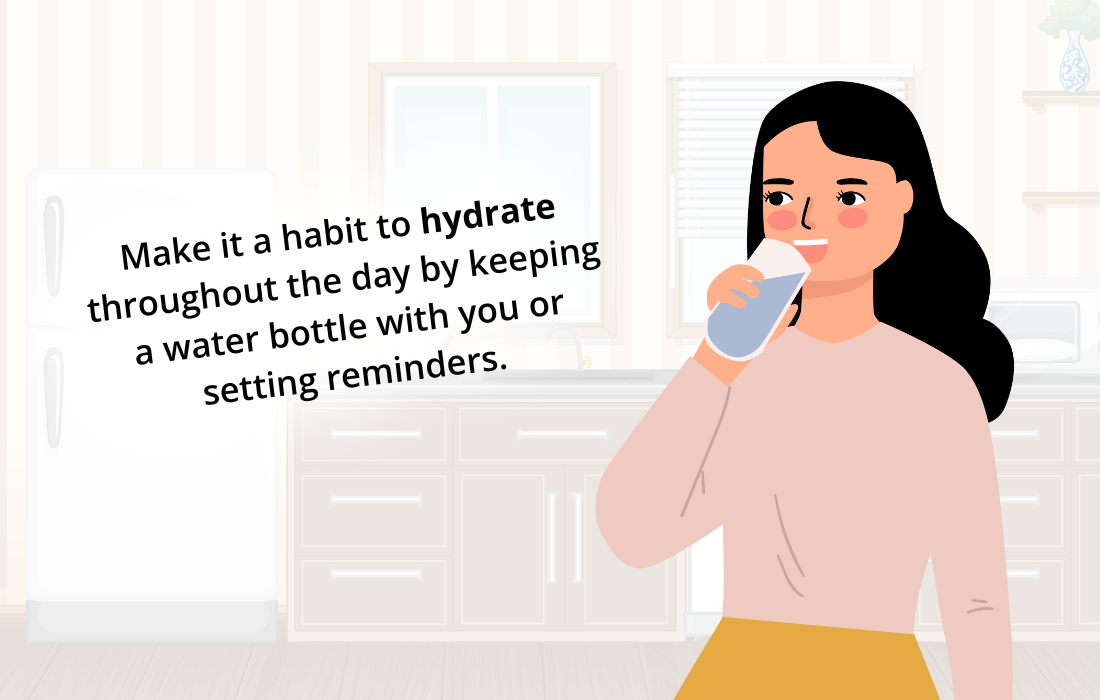
Common Questions
What does it mean when you’re hungry but don’t want to eat?
This can happen when emotional, mental, or physical factors suppress your appetite, such as stress, sadness, or fatigue.
It can also happen when you’re battle the “shoulds” vs the “wants” in your mind. Listening to your body and exploring what you might need, whether it’s rest, comfort, or nourishment, can help.
What are some healthy comfort foods to eat when nothing sounds good?
Options like hearty soups, oatmeal with nut butter, or roasted sweet potatoes can offer nourishment and comfort without feeling heavy.
Simple foods that are warm, easy to prepare, and flavorful are often a good starting point. Then you can get feedback about how satisfying it was and adjust moving forward!
How do food groups help you decide what to eat when you’re unsure?
Using food groups as a guide can ensure you get a variety of nutrients and textures to satisfy both your hunger and taste buds.
Try pairing a protein, a fat, and a carbohydrate for a balanced and satisfying meal. I always aim to add protein to whatever I eat to give me a focus when I’m choosing meals and snacks.
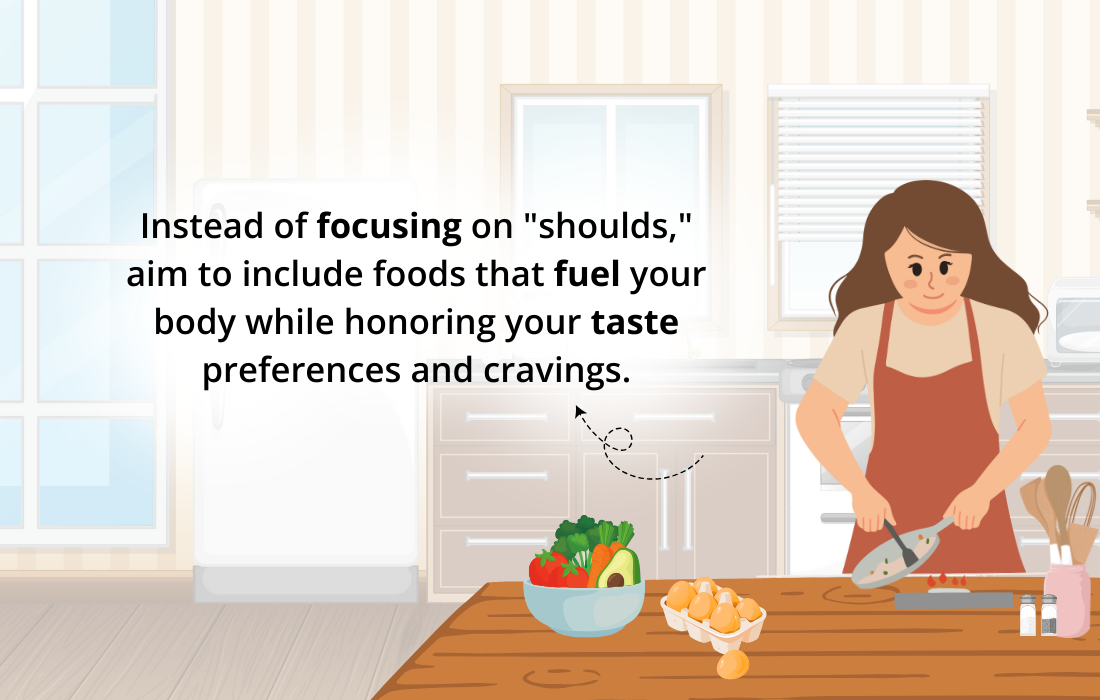
What are food rules and should I follow them to figure out what to eat?
Food rules are rigid guidelines like “no carbs after 6 PM” or “always eat breakfast,” which can limit your intuition.
We can sometimes have a million food rules in our brains if we’ve spent a lot of time in the diet world. Instead of relying on rules, exploring asking your body and listening to your cues to guide your choices.
Finding a way to eat that nourishes you may feel confused if you’re following a bunch of different food blogs or diet plans instead of listening to your body.
For example, some bloggers or food “gurus” say you must eat meat, others say you shouldn’t eat meat, some say you should allow sugar, some say you shouldn’t allow even a teaspoon of sugar into your mouth.
If you just try to follow food rules, it’s impossible to “get it right” as many of the “rules” conflict with each other.
But don’t worry – you’ll find a way to listen to your body and eat more intuitively. It just takes time and consistency tuning into your body and emotions. And if you need help getting there, consider working with a food relationship coach or emotional eating coach.
Can comfort food be nutritious and still make me feel satisfied?
Yes! Comfort foods like baked pasta with vegetables, avocado toast, or creamy yogurt with granola can provide warmth and satisfaction while being nourishing.
It’s about choosing options that feel good to your body and soul.
How do I balance different food groups to feel nourished after a meal?
Aim to include a variety of nutrients—like protein, healthy fats, fiber, and carbs—in each meal to create balance.
Adding colorful vegetables, a quality protein, and a source of fat can leave you feeling full and energized.
Related Articles
⚪ What Does It Mean When You Don’t Know What To Eat?
⚪ I Never Know What To Eat
⚪ You CAN Stop Emotional Eating, and Here’s What to Do Instead
Get the Normal Eater’s Newsletter
Join 8000+ women who are overcoming overeating, binge eating, and breaking up with dieting forever. Get Jenn’s inspiring and actionable weekly newsletter with the latest posts, podcasts, and tips on how to love your body, find food freedom, and lose weight holistically.
Get the Normal Eater’s NewsletterWork with an Emotional Eating & Holistic Nutrition Coach
Overcome Bingeing and Emotional Eating and Break Up with Yo-yo Dieting
Working with an emotional eating coach and holistic nutritionist can help you get free from the frustrating binge and restrict cycle and stop yo-yo dieting.
You don’t have to be obsessed with food or have a million rules around eating to find your natural weight and learn to love your body. Ready to actually see a lasting change and experience true freedom?
Schedule a 20-min CallAbout the Author:

Jenn Hand has been helping women like you become normal eaters since 2015.
She’s worked with thousands of women, helping them to balance their bodies, end bingeing, stop obsessing over food, and start feeling amazing again. As a board-certified health coach and holistic nutritionist, Jenn knows how to support you in making real positive changes that last.
Her articles have been published on Mind Body Green, Tiny Buddha, Thrive Global and other local and global media platforms. She’s the author of How to Be a Normal Eater and the creator of The Normal Eater’s Club program. Listen to Jenn’s advice and tips on the Cake Doesn’t Count Podcast, or read more of her articles for free on the Food Freedom Blog.
Learn About Coaching!


